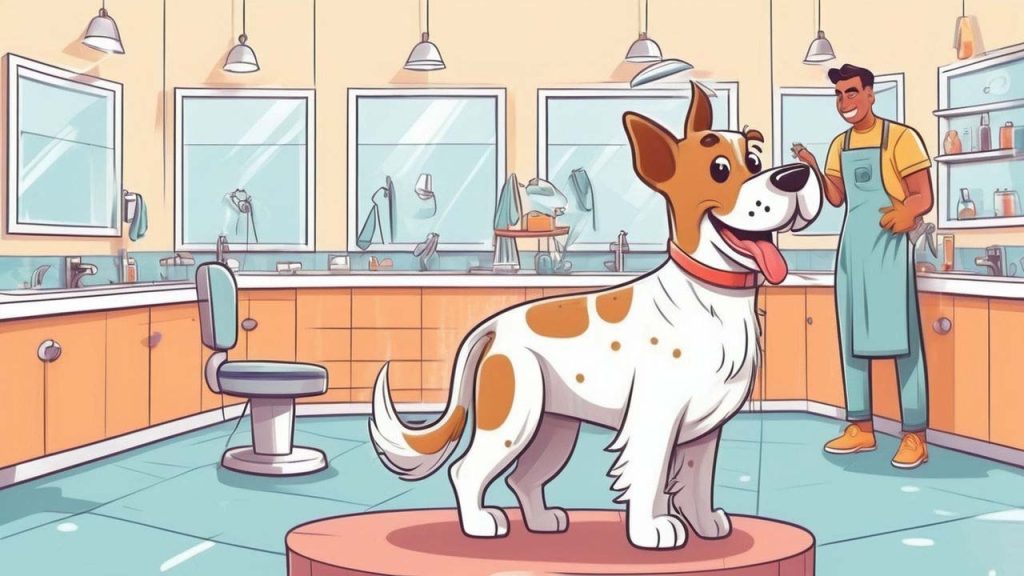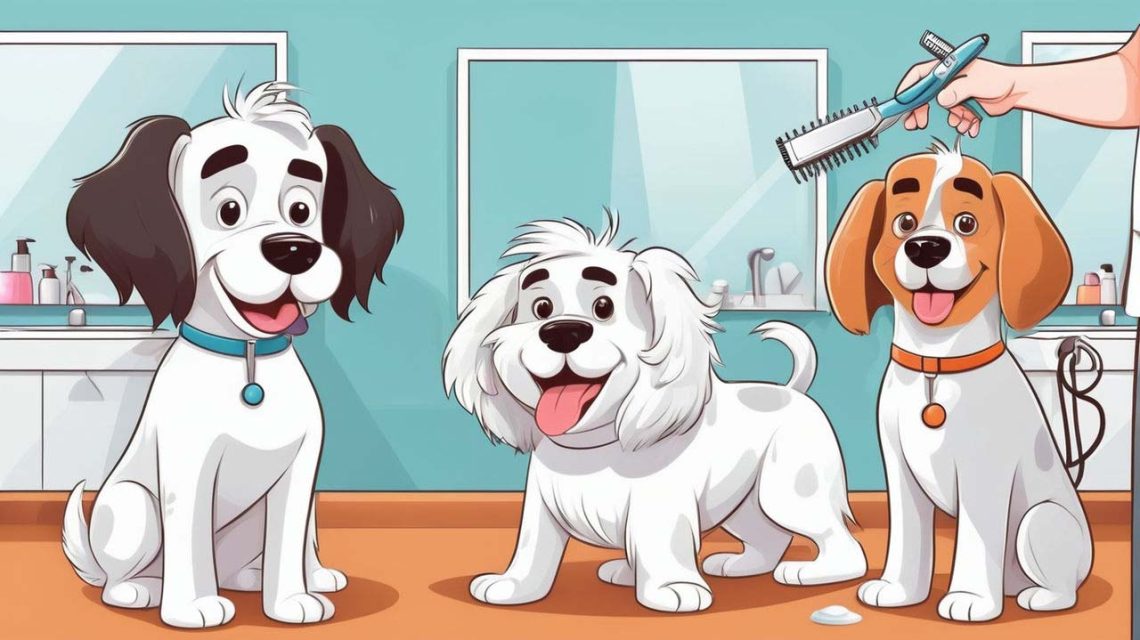For those passionate about pets, a career in dog grooming offers both creative satisfaction and professional growth. Dog grooming training courses provide essential skills in coat care, nail trimming, ear cleaning, and breed-specific cuts. These courses offer the foundation to start your career as a groomer, whether you dream of running your own business or working in a professional pet salon.
In this guide, we’ll explore everything about dog grooming training courses, from core skills and certifications to choosing the right training program for your goals.
Why Consider a Career in Dog Grooming?
A career in dog grooming is both rewarding and in-demand. Grooming isn’t only about appearance—it directly impacts a dog’s health, comfort, and well-being. Groomers are professionals who understand the needs of each breed, providing essential services that enhance a pet’s quality of life.
1. Helping Pets Stay Healthy and Comfortable
Grooming keeps dogs clean, reduces the risk of skin issues, and even detects health problems early on. Groomers play a role in every pet’s health by keeping their coats free from dirt, matting, and pests.
- Skin and Coat Health: Regular grooming helps prevent skin irritations and keeps the coat shiny.
- Early Health Detection: Groomers often spot early signs of skin infections, lumps, or ear issues that owners might overlook.
2. Growing Demand in the Pet Care Industry
With pet ownership on the rise, skilled groomers are more in demand than ever. Grooming services are essential to pet care, and training in this field offers various career paths, from working in established pet salons to running a mobile grooming business.
- Flexible Career Options: Groomers can work in salons, vet clinics, or independently, offering flexible and varied work environments.
- Job Security: The pet industry continues to grow, creating a steady demand for professional grooming services.

Core Skills You’ll Learn in Dog Grooming Training Courses
A comprehensive dog grooming course teaches you the skills and knowledge necessary to groom dogs safely and professionally. Here’s an overview of the skills you can expect to learn:
1. Coat and Skin Care
Understanding the needs of different coat types is essential in dog grooming. Courses cover how to handle short, medium, long, and curly coats while avoiding issues like matting or skin irritation.
- Brushing and Dematting: Learn how to prevent and remove mats to keep coats manageable.
- Shampooing Techniques: Grooming courses teach correct shampoo and conditioner application for different skin and coat types.
2. Nail Trimming and Paw Care
Keeping a dog’s nails trimmed is crucial for comfort and safety. Training courses teach you how to trim nails safely without causing discomfort or injury.
- Proper Nail Trimming Techniques: Learn how to use clippers and grinders, understanding the quick to avoid cuts.
- Paw Pad Care: Courses cover trimming around paw pads and keeping them free from debris, preventing discomfort.
3. Ear and Eye Cleaning
Keeping a dog’s ears and eyes clean reduces the risk of infection and maintains overall health. Grooming courses include techniques for safely cleaning sensitive areas.
- Ear Cleaning: Techniques for removing dirt and buildup from ears to prevent infections.
- Eye Care: Removing tear stains and debris safely, especially in breeds prone to eye issues.
4. Breed-Specific Grooming Techniques
Certain breeds require specific grooming styles, such as the Poodle cut or the Schnauzer trim. Grooming courses teach these styles so you can offer tailored services.
- Breed Cuts: Courses cover common breed cuts, ensuring you know how to achieve each breed’s traditional look.
- Styling Skills: Beyond breed-specific cuts, learn how to style for functionality and aesthetics.
5. Handling and Safety Protocols
A successful groomer knows how to handle dogs safely, even in stressful situations. Courses cover animal behavior basics and proper handling techniques to ensure a calm, safe environment.
- Restraint Techniques: Learn safe restraint methods to prevent accidents without causing stress to the dog.
- Behavior Management: Courses often teach how to calm anxious dogs and create a positive grooming experience.
Choosing the Right Dog Grooming Training Courses
With various training programs available, it’s essential to choose the right course that aligns with your career goals. Here’s what to look for when selecting a program:
1. Accredited Certification Programs
A reputable grooming school offers accredited courses that provide certification upon completion. Certifications give credibility to your skills and make you more competitive in the job market.
- Certification Standards: Look for programs accredited by organizations like the National Dog Groomers Association of America (NDGAA).
- Hands-On Training: Accredited courses often include hands-on experience, which is crucial for skill development.
2. Comprehensive Curriculum
A good course covers all aspects of grooming, from basic skills to advanced techniques. Review the curriculum to ensure it includes core grooming skills, breed-specific cuts, and safety protocols.
- Foundational Skills: Ensure the program covers coat care, nail trimming, ear cleaning, and basic cuts.
- Advanced Techniques: Many courses offer advanced modules, such as styling, creative grooming, and handling difficult dogs.
3. Experienced Instructors
Instructors with real-world grooming experience provide practical insights that help you learn beyond theory. Look for courses led by industry professionals who can share tips from their own careers.
- Experienced Trainers: Instructors with years of grooming experience can offer valuable tips and real-world advice.
- Mentorship Opportunities: Programs with small class sizes often allow for one-on-one mentorship, providing personalized guidance.
4. Flexible Scheduling Options
Look for courses that fit your schedule, especially if you’re working or studying. Many grooming schools offer part-time, evening, and online options to accommodate different schedules.
- Part-Time Classes: Part-time courses let you learn at your own pace, making it easier to balance other responsibilities.
- Online and Hybrid Options: Some schools offer online theory lessons combined with hands-on practice, giving you flexibility without sacrificing experience.
Certifications and Licensing for Dog Groomers
Obtaining certification is an important step in establishing yourself as a professional groomer. Although licensing requirements vary by state, certification shows clients and employers that you’ve received quality training.
1. Certified Professional Groomer (CPG)
The Certified Professional Groomer (CPG) credential is a widely recognized certification that validates your grooming skills and knowledge.
- Qualification Exam: The certification requires passing both a written and practical exam, demonstrating knowledge and skill.
- Increased Job Opportunities: Certification opens doors to more job opportunities and adds credibility to your resume.
2. Advanced Certifications
For those who want to specialize or advance in their careers, advanced certifications focus on areas like breed-specific grooming, creative grooming, and pet first aid.
- Breed-Specific Certification: Some organizations offer certifications in breed-specific cuts, demonstrating advanced skill.
- Pet First Aid Certification: Knowing basic first aid is highly valuable, showing clients and employers you’re prepared for emergencies.
Career Paths with Dog Grooming Training
A dog grooming certification opens up a variety of career paths, from working at pet salons to starting your own business. Here are some of the options:
1. Working in a Pet Grooming Salon
Most groomers start their careers in grooming salons, gaining experience and honing their skills under the guidance of more experienced groomers.
- Team Environment: Working in a salon offers opportunities for mentorship and collaboration.
- Client Interaction: Salons often build loyal customer bases, allowing groomers to develop lasting relationships with clients.
2. Mobile Grooming Business
Mobile grooming offers flexibility and convenience, bringing grooming services directly to clients’ homes. This is a great option for groomers who enjoy independence and want to reach a broader clientele.
- Flexible Schedule: Mobile grooming allows for flexible hours and control over client appointments.
- Growing Demand: Many pet owners prefer mobile grooming, as it reduces travel stress for their pets.
3. Specialized Grooming for Show Dogs
Show dog grooming requires expertise in breed standards and show presentation. This specialty area involves precision and knowledge of each breed’s unique grooming requirements.
- Breed Expertise: Show grooming lets you specialize in particular breeds, requiring an eye for detail.
- Higher Earnings Potential: Show grooming often commands higher rates due to the precision and skill required.
FAQs About Dog Grooming Training Courses
How long does it take to complete a dog grooming course?
- Most courses take between 8 weeks to 6 months, depending on the program’s depth and your availability.
Do I need a license to become a dog groomer?
- Licensing varies by state, but certification through a recognized program is highly recommended to establish credibility.
Are there online dog grooming training courses?
- Yes, many schools offer online courses with practical components, allowing flexibility while still providing hands-on experience.
What equipment will I need for grooming school?
- Basic equipment includes grooming shears, clippers, brushes, combs, and nail clippers. Most schools provide a list of required tools.
Is dog grooming a good career choice?
- Yes, dog grooming is a rewarding, in-demand career with a growing pet care industry. It offers job flexibility and opportunities for growth.


